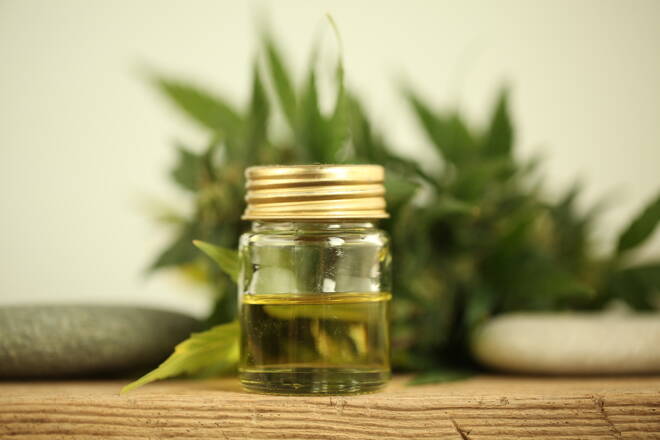Advertisement
Advertisement
CBD Prices Weighed Down by Rising Supply in 2020; Industry has Huge Growth Potential
By:
Cannabidiol (CBD) – the major non-psychoactive ingredient of Cannabis sativa that is commonly used to address insomnia, chronic aches, anxiety symptoms and more – has gradually become cheaper as growing popularity and increasing supply created intense price rivalry among brands, according to Leafreport’s Independent Study of CBD Products.
According to Leafreport, over two-thirds of brands slashed their prices this year to some degree. The report also said CBD prices plunged 17% in 2020 from last year, except prices for pet edibles which surged 44%.
Moreover, the decline in prices for hemp biomass, falling production costs and firms’ aim to reach low-income household amid rising jobless rate due to the ongoing COVID-19 pandemic have also contributed to this year’s drop.
Indeed, owner of CBD company Kind Lab, Angela Arena in an interview with Leafreport, said that one of the most significant reasons for CBD’s steady price decline in 2020 is that more hemp suppliers have entered the market since the passage of the 2018 Farm Bill legalized hemp cultivation. With the increased access to hemp, more and more CBD brands were able to enter the market.
Kind Lab’s Arena further stated that “prices were so high because the supply was so low, but we’re starting to see that drop, especially as people get creative and find ways to produce lower-cost products and introduce those into the market, it’s going to become a lot more price competitive,” noted Leafreport.
According to Hemp Benchmarks, an overall price of hemp CBD biomass plunged about 80% from April last year to April 2020 – dropped to $8.1 per pound from $38.0 per pound.
There are other factors that influence the pricing decision of a CBD product – the underlying costs associated with certain certifications, quality testing with third-party and merchant fees that factor into the sale of the product at clinics and online.
“A good way to make sure a CBD product is worth the money is to check how it is advertised. It’s always worth checking if the label says USDA Organic certified and if the brand publishes their certificates of third-party analysis (COAs) on their website. Also, as Terwilliger notes, look for a little orange stamp that says U.S. Hemp Authority Certified. This third-party organization evaluates the transparency of a brand’s testing protocol, quality manual, marketing, and more,” Leafreport added.
Investment in Emerging Cannabis Industry
Cannabis is an emerging industry and is subject to regulatory headwinds. Although the industry is still emerging, legal cannabis has gone through multiple iterations. The business started as a flower-based market aimed at catering to the needs of stoners and thereafter, blossomed to a more retail-centric market that experimented with multiple edibles, beverages and concentrates.
Most recently, the cannabis industry has further widened its reach to target a broad base of the audience whose main aim is not to get intoxicated but rather to be cured of some form of the diseases.
While over half of the population is in favour of new the legalization, only a few states have thus far legalized cannabis for recreational use and the product remains illegal at the federal level.
Much work and changes are still required to occur for this industry to realize its full potential.
“If you are considering investing in a U.S. company that is connected to the cannabis industry, be aware that cannabis-related companies may be at risk of federal and/or state criminal prosecution. The Department of Treasury has issued guidance that The Controlled Substances Act (“CSA”) makes it illegal under U.S. federal law to manufacture, distribute, or dispense cannabis and cannabis-related products. Many states impose and enforce similar prohibitions. Notwithstanding the federal ban, however, many U.S. states and the District of Columbia have legalized certain cannabis-related activities,” said Eric Assaraf of Cowen and Company.
Based on Jefferies Virtual Cannabis Summit, which hosted over 200 investors on Oct 7-8, the first point of the panel discussion was the Cannabidiol market size in the United States. There was a range of different estimates but the panellists were largely consistent about their growth predictions for the industry post-COVID-19, expecting it to grow at CAGR of 20%-25% over the next five years on a conservative basis and 30%-40%, when speaking optimistically.
The panellists were also on the same page when discussing the end uses of Cannabidiol which are quite profuse and span across personal use goods, medical products and CPG products. The CBD penetration right now is only 15% of households and therefore there is a big untapped opportunity for the industry to capitalize on, Jefferies added.
About the Author
Vivek Kumarauthor
Vivek completed his education from the University of Mumbai in Economics and possesses stronghold in writing on stocks, commodities, foreign exchange, and bonds.
Advertisement
